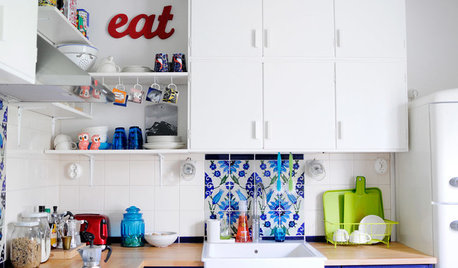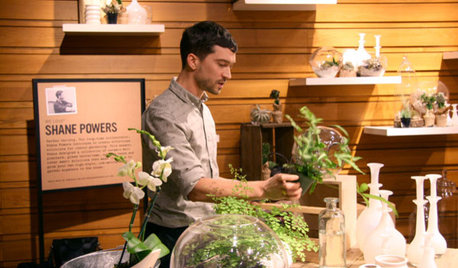Mixed Market Garden Yield Planning
ForgottenForty
12 years ago
Related Stories

RANCH HOMESHouzz Tour: Ranch House Changes Yield Big Results
An architect helps homeowners add features, including a new kitchen, that make their Minnesota home feel just right
Full Story
MODERN ARCHITECTUREHouzz Tour: Creative Thinking Yields a Lakefront 'Living Room'
Careful planning leads to a new structure and location for a stellar view
Full Story
GARDENING GUIDESVegetables and Flowers Mix in Beautiful Edible Gardens
Ornamentals, meet your edible garden mates. We know you'll get along just beautifully
Full Story
VINTAGE STYLEHouzz Tour: Flea Market Decor Done Right in Finland
Forget fusty and dusty. Secondhand finds in this home are as bright and cheery as if they just stepped off the showroom floor
Full Story
VINTAGE STYLEFlea Market Find: Vintage Ladders
You can use them to hang linens, stack plants and add rustic charm to a room
Full Story
GARDENING GUIDESWhat Are Your Spring Gardening Plans?
Tearing out the lawn? Planting edibles? Starting from scratch? Tell us what you plan to change in your garden this year
Full Story
FARM YOUR YARDHow to Grow Vegetables in Containers
Get glorious vegetables and fruits on your patio with a pro’s guidance — including his personal recipe for potting mix
Full Story
URBAN GARDENSOne Fern Day
Think terrariums are tiresome? Unusual containers and unexpected greens yield surprising offshoots
Full Story
URBAN GARDENSPlant a Garden That Can Move With You
Think mobile when planning your outdoor space and you can enjoy it wherever you move next
Full Story
EDIBLE GARDENSHow to Grow Your Own Sweet Summer Crops
This guide will help any gardener get started on growing the freshest warm-season veggies and berries for summer
Full Story





little_minnie
2ajsmama
Related Professionals
Derry Landscape Architects & Landscape Designers · Sand Springs Landscape Architects & Landscape Designers · Matthews Landscape Contractors · Surprise Landscape Contractors · Byram Landscape Contractors · Long Branch Landscape Contractors · Maywood Landscape Contractors · North Richland Hills Landscape Contractors · Northbridge Landscape Contractors · Paramount Landscape Contractors · Tacoma Landscape Contractors · Glen Avon Solar Energy Systems · Coachella Solar Energy Systems · Cocoa Beach Solar Energy Systems · Norton Solar Energy SystemsMark
bi11me
bi11me
ForgottenFortyOriginal Author
myfamilysfarm
jrslick (North Central Kansas, Zone 5B)
Mark
bi11me
little_minnie
bi11me